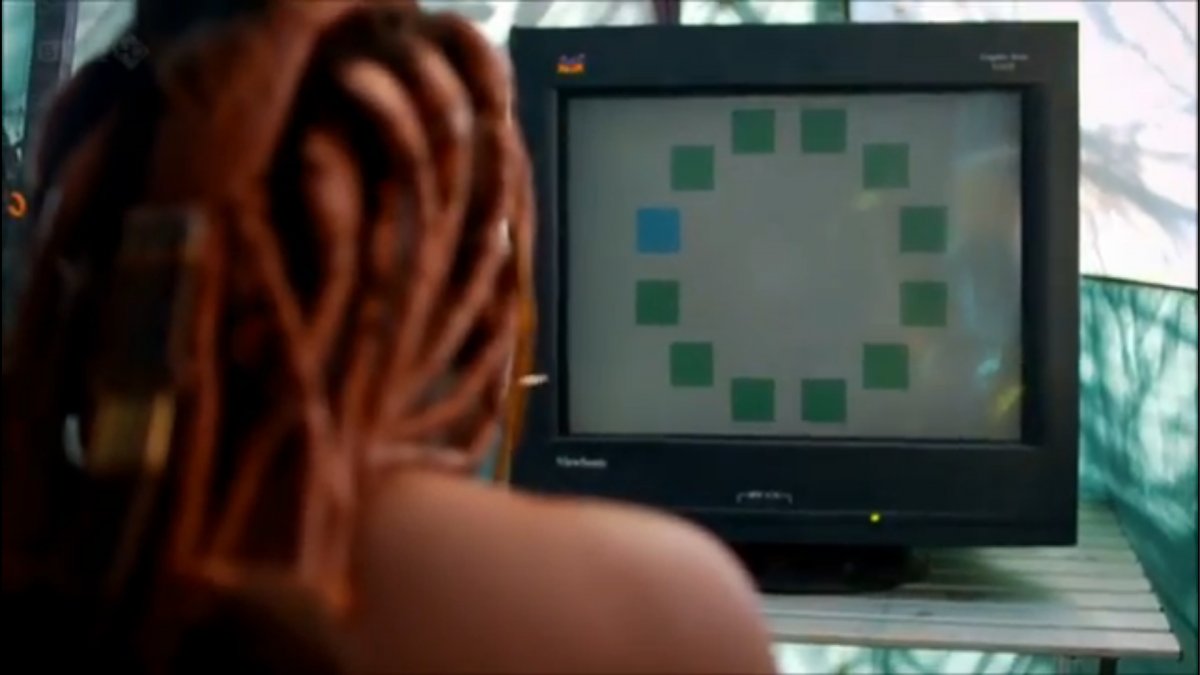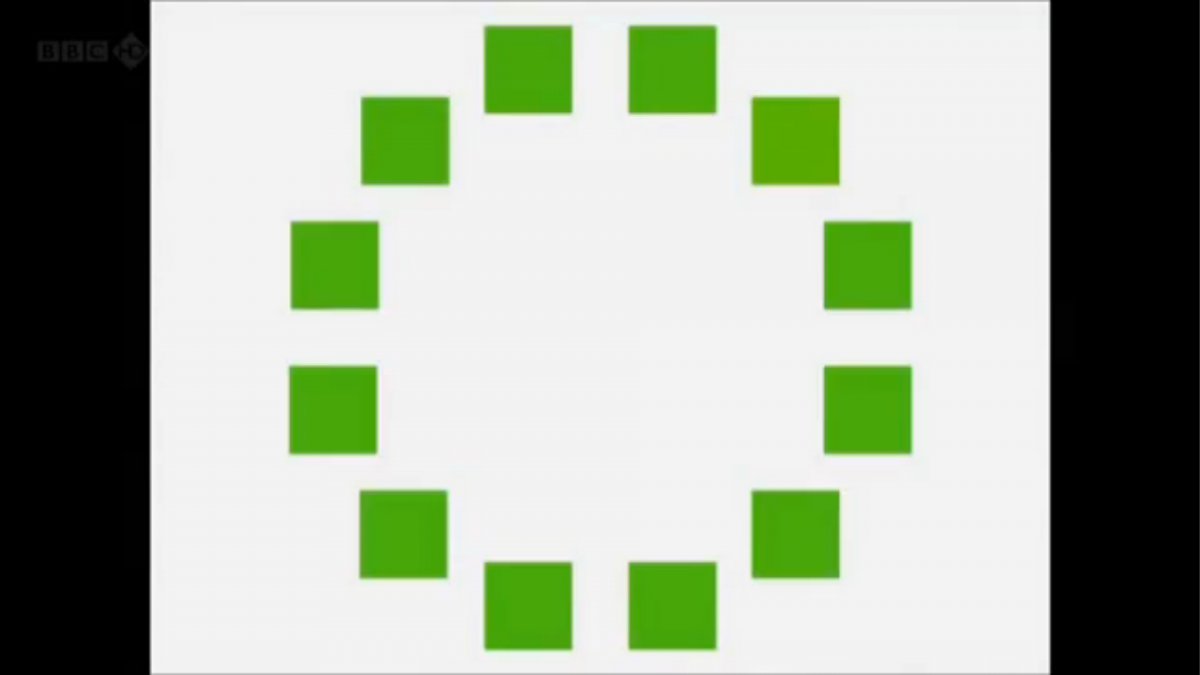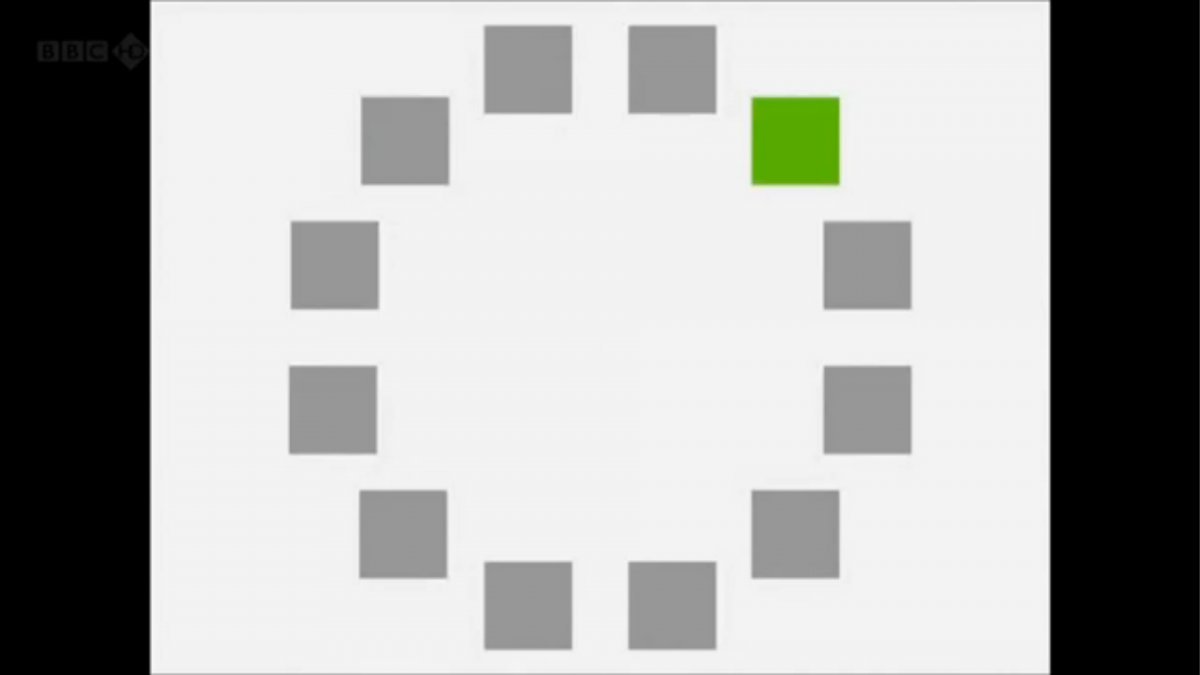It looks like you're using an Ad Blocker.
Please white-list or disable AboveTopSecret.com in your ad-blocking tool.
Thank you.
Some features of ATS will be disabled while you continue to use an ad-blocker.
7
share:
This is known as the hard problem of consciousness or qualia.
I submit experience is immaterial and unique to each of the 7.6 billion people on the planet. Each of us is a black box of internal experiences and the closest A.I. will come to mimicking this is through quantum computers. Even then, this will not be the same because our experiences are internal and immaterial.
If you simply ask someone, how does Spaghetti taste, you can never know what they're experiencing when they eat Spaghetti. When you ask them how does it taste they could be describing to you how Pizza taste and how would you know? We have to trust what someone is saying about their experience because we will never know.
I was watching a true crime special not to long ago and this guy killed his Wife and all of they're friends and family talked about how they were shocked because they were this loving couple. When they talked to the guy, he said he hated his Wife. Again, we're black boxes of immaterial internal experiences.
A.I. can tell when people are mad or sad but again, experiences behind these feelings can't be identified or quantified in any material way.
A person can be sad because a relative died but are they sad because they will miss them or are they sad because they were left out of the will? A female can break up with her boyfriend and be sad but is she sad because it's over or is she glad that it's over but she just has a general sadness because they were in a 3 year relationship?
Look at this study:
There's Evidence Humans Didn't Actually See Blue Until Modern Times
www.sciencealert.com...
Of course they don't know because we're all black boxes of internal immaterial experiences. It goes on to say:
www.sciencealert.com...
Our perceptions of "reality" can be different but it goes even deeper when it comes to our experiences. Each of the 7.6 billion people in the world are a universe of 1. We have to trust what others are saying about their experiences because we're black boxes of internal immaterial experiences.
I submit experience is immaterial and unique to each of the 7.6 billion people on the planet. Each of us is a black box of internal experiences and the closest A.I. will come to mimicking this is through quantum computers. Even then, this will not be the same because our experiences are internal and immaterial.
If you simply ask someone, how does Spaghetti taste, you can never know what they're experiencing when they eat Spaghetti. When you ask them how does it taste they could be describing to you how Pizza taste and how would you know? We have to trust what someone is saying about their experience because we will never know.
I was watching a true crime special not to long ago and this guy killed his Wife and all of they're friends and family talked about how they were shocked because they were this loving couple. When they talked to the guy, he said he hated his Wife. Again, we're black boxes of immaterial internal experiences.
A.I. can tell when people are mad or sad but again, experiences behind these feelings can't be identified or quantified in any material way.
A person can be sad because a relative died but are they sad because they will miss them or are they sad because they were left out of the will? A female can break up with her boyfriend and be sad but is she sad because it's over or is she glad that it's over but she just has a general sadness because they were in a 3 year relationship?
Look at this study:
There's Evidence Humans Didn't Actually See Blue Until Modern Times
Human vision is incredible - most of us are capable of seeing around 1 million colours, and yet we still don't really know if all of us perceive these colours in the same way.
www.sciencealert.com...
Of course they don't know because we're all black boxes of internal immaterial experiences. It goes on to say:
But there's actually evidence that, until modern times, humans didn't actually see the colour blue.
A few years later, a philologist (someone who studies language and words) called Lazarus Geiger decided to follow up on this observation, and analysed ancient Icelandic, Hindu, Chinese, Arabic, and Hebrew texts to see if they used the colour.
There have been various studies conducted to try to work this out, but one of the most compelling was published in 2006 by Jules Davidoff, a psychologist from Goldsmiths University of London.
Davidoff and his team worked with the Himba tribe from Namibia. In their language, there is no word for blue and no real distinction between green and blue.
But the Himba tribe struggled to tell Davidoff which of the squares was a different colour to the others.
Those who did hazard a guess at which square was different took a long time to get the right answer, and there were a lot of mistakes.
www.sciencealert.com...
Our perceptions of "reality" can be different but it goes even deeper when it comes to our experiences. Each of the 7.6 billion people in the world are a universe of 1. We have to trust what others are saying about their experiences because we're black boxes of internal immaterial experiences.
Daaaamn, I wanna be called Lazarus Geiger!
That we may have not seen the color blue until recent times is, hands down, the most interesting piece of information I've read the last few days. Thanks.
That we may have not seen the color blue until recent times is, hands down, the most interesting piece of information I've read the last few days. Thanks.
Yes- But who's watching the black boxes?
This is something I have put thought into. Where do all the untold stories go? All those brilliant thoughts, there for a second and then gone? When is sung the tale of the unsung hero?
I would not care to venture a guess but it is something I find I must believe in.
This is something I have put thought into. Where do all the untold stories go? All those brilliant thoughts, there for a second and then gone? When is sung the tale of the unsung hero?
I would not care to venture a guess but it is something I find I must believe in.
a reply to: neoholographic
I think about this all the time, interesting topic. I have also read some material that can relate, it is a study on Private Language aka PI. Known as The Private Language Argument by Wittgenstein. You may have already researched into this yourself, but if not I recommend it.
I recently spoke to someone whom informed me they were color blind which got me to thinking about the exact stuff you are describing here in your thread.
Also you comment at the end of your thread... and mention all the people of Earth are a Universe of 1... reminds me of your thread recently that touches on the universe which builds its self based on memory.
Regarding the color & word blue not being present in some past tribes... I believe i read this somewhere before recently. So did they call it something else ? Cyan (lol)? What do you think was going on here... they just weren't describing it correctly, or was it a special tribe of color blind folks, or they categorized the two colors as the same ?
leolady
I think about this all the time, interesting topic. I have also read some material that can relate, it is a study on Private Language aka PI. Known as The Private Language Argument by Wittgenstein. You may have already researched into this yourself, but if not I recommend it.
I recently spoke to someone whom informed me they were color blind which got me to thinking about the exact stuff you are describing here in your thread.
Also you comment at the end of your thread... and mention all the people of Earth are a Universe of 1... reminds me of your thread recently that touches on the universe which builds its self based on memory.
Regarding the color & word blue not being present in some past tribes... I believe i read this somewhere before recently. So did they call it something else ? Cyan (lol)? What do you think was going on here... they just weren't describing it correctly, or was it a special tribe of color blind folks, or they categorized the two colors as the same ?
leolady
a reply to: leolady
Thanks for the response.
I think this shows that what we call reality is based on perception and people can perceive "reality" in different ways. We see the color blue as objective reality but like Robert Lanza said in his book Biocentrism, if a person sees a purple sky that's "reality" to them.
In this case, this tribe had trouble seeing this blue square.

www.sciencealert.com...
That blue square is obvious to us but they had trouble seeing it and picking it out.
On the flips side, the article says this about us.

Here's a pic showing where the green square is that's a different shade.

I did a thread awhile back called The Case Against Reality A professor of cognitive science argues against it
www.abovetopsecret.com...
Professor Hoffman said this:
www.theatlantic.com...
These things are very interesting!
Thanks for the response.
I think this shows that what we call reality is based on perception and people can perceive "reality" in different ways. We see the color blue as objective reality but like Robert Lanza said in his book Biocentrism, if a person sees a purple sky that's "reality" to them.
In this case, this tribe had trouble seeing this blue square.

To test whether that meant they couldn't actually see blue, he showed members of the tribe a circle with 11 green squares and one obviously blue square.
But the Himba tribe struggled to tell Davidoff which of the squares was a different colour to the others.
Those who did hazard a guess at which square was different took a long time to get the right answer, and there were a lot of mistakes.
www.sciencealert.com...
That blue square is obvious to us but they had trouble seeing it and picking it out.
On the flips side, the article says this about us.
But, interestingly, the Himba have lots more words for green than we do.
So to reverse the experiment, Davidoff showed English speakers this same circle experiment with 11 squares of one shade of green, and then one odd square of a different shade.
As you can see below, it's pretty tough for us to distinguish which square is different. In fact, I really can't see any differences at all.
The Himba tribe, on the other hand, could spot the odd square out straight away.

Here's a pic showing where the green square is that's a different shade.

I did a thread awhile back called The Case Against Reality A professor of cognitive science argues against it
www.abovetopsecret.com...
Professor Hoffman said this:
Donald D. Hoffman, a professor of cognitive science at the University of California, Irvine. Hoffman has spent the past three decades studying perception, artificial intelligence, evolutionary game theory and the brain, and his conclusion is a dramatic one: The world presented to us by our perceptions is nothing like reality.
" I think that’s absolutely true. The neuroscientists are saying, “We don’t need to invoke those kind of quantum processes, we don’t need quantum wave functions collapsing inside neurons, we can just use classical physics to describe processes in the brain.” I’m emphasizing the larger lesson of quantum mechanics: Neurons, brains, space … these are just symbols we use, they’re not real. It’s not that there’s a classical brain that does some quantum magic. It’s that there’s no brain! Quantum mechanics says that classical objects—including brains—don’t exist. So this is a far more radical claim about the nature of reality and does not involve the brain pulling off some tricky quantum computation. So even Penrose hasn’t taken it far enough. But most of us, you know, we’re born realists. We’re born physicalists. This is a really, really hard one to let go of."
www.theatlantic.com...
These things are very interesting!
a reply to: neoholographic
Wow the color perception thing was wild! So very easy to distinguish the blue from the green squares, but the green squares in the other pic, at first looked impossible to distinguish from the other greens. I figured, if there really was a difference, I was going to keep staring and figure it out. I was about to give up, but my eyes kept going to that one square which seemed barely lighter, but almost indistinguishable. It was the correct square that I kept going back to. Then I tried it again and...couldn't make out a difference. WTH? LOL
Fadcinating to hear about the tribe that couldn't see the obvious blue one.
Wow the color perception thing was wild! So very easy to distinguish the blue from the green squares, but the green squares in the other pic, at first looked impossible to distinguish from the other greens. I figured, if there really was a difference, I was going to keep staring and figure it out. I was about to give up, but my eyes kept going to that one square which seemed barely lighter, but almost indistinguishable. It was the correct square that I kept going back to. Then I tried it again and...couldn't make out a difference. WTH? LOL
Fadcinating to hear about the tribe that couldn't see the obvious blue one.
edit on 28-6-2018 by Night Star because: (no reason given)
a reply to: leolady
I would assume there must have been a different word used to describe the color blue. Then again they say to never assume LOL
Regarding the color & word blue not being present in some past tribes... I believe i read this somewhere before recently. So did they call it something else ? Cyan (lol)? What do you think was going on here... they just weren't describing it correctly, or was it a special tribe of color blind folks, or they categorized the two colors as the same ?
I would assume there must have been a different word used to describe the color blue. Then again they say to never assume LOL
new topics
-
Just Came Across These Unusual Old UFO Pics
Aliens and UFOs: 37 minutes ago -
LA Mayor Bass Demanded $49M in Additional LAFD Cuts One Week Before Wildfires
Mainstream News: 2 hours ago -
Sepultura - Territory - With New Drummer Greyson Nekrutman
Music: 3 hours ago -
Carry On!
Short Stories: 3 hours ago -
This should be plastered all over the airwaves
Mainstream News: 9 hours ago -
Oh, Good Gosh. “Kremlin Warns Stay Away from Greenland.”
World War Three: 11 hours ago -
Archbisop Vigano Warns of Deep State and Deep Church
New World Order: 11 hours ago
top topics
-
This should be plastered all over the airwaves
Mainstream News: 9 hours ago, 21 flags -
Archbisop Vigano Warns of Deep State and Deep Church
New World Order: 11 hours ago, 15 flags -
LA Mayor Bass Demanded $49M in Additional LAFD Cuts One Week Before Wildfires
Mainstream News: 2 hours ago, 13 flags -
Oh, Good Gosh. “Kremlin Warns Stay Away from Greenland.”
World War Three: 11 hours ago, 11 flags -
A Flash of Beauty: Bigfoot Revealed ( documentary )
Cryptozoology: 17 hours ago, 8 flags -
Carry On!
Short Stories: 3 hours ago, 2 flags -
Just Came Across These Unusual Old UFO Pics
Aliens and UFOs: 37 minutes ago, 2 flags -
Sepultura - Territory - With New Drummer Greyson Nekrutman
Music: 3 hours ago, 1 flags
active topics
-
This should be plastered all over the airwaves
Mainstream News • 52 • : fringeofthefringe -
Just Came Across These Unusual Old UFO Pics
Aliens and UFOs • 1 • : gort69 -
Los Angeles brush fires latest: 2 blazes threaten structures, prompt evacuations
Mainstream News • 349 • : AlroyFarms -
LA Mayor Bass Demanded $49M in Additional LAFD Cuts One Week Before Wildfires
Mainstream News • 12 • : cherokeetroy -
Mood Music Part VI
Music • 3782 • : lilzazz -
Judge rules president-elect Donald Trump must be sentenced in 'hush money' trial
US Political Madness • 117 • : WeMustCare -
Dr. Demento
Music • 15 • : GotterDameron23 -
Trump says ownership of Greenland 'is an absolute necessity'
Other Current Events • 158 • : matafuchs -
Archbisop Vigano Warns of Deep State and Deep Church
New World Order • 8 • : DontTreadOnMe -
A Flash of Beauty: Bigfoot Revealed ( documentary )
Cryptozoology • 7 • : ColeYounger2
7
